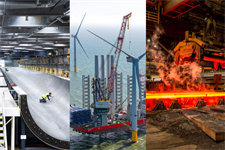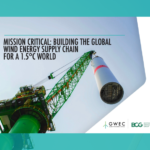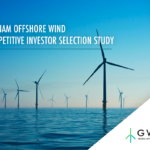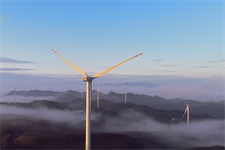Critical risks to European wind supply chain threaten to derail green transition
Energy Disrupter

High inflation, soaring demand, and disruption in the supply of key commodities were all identified as factors jeopardising Europe’s transition towards renewable energy unless policy interventions were made by European lawmakers in the immediate future.
Published today (19 April), the ‘State of the European Wind Energy Supply Chain’ report was authored by industry trade body WindEurope and consultants Rystad Energy.
It examined the changes in the supply chain needed to meet Europe’s climate targets of reducing carbon emissions by 55% from 1990 levels by the end of the decade.
WindEurope previously estimated 440GW of wind energy capacity would be needed in Europe by 2030, which entails a massive expansion of wind projects in the coming years.
The report showed that on this trajectory market demands in Europe would begin to outpace supply as early as next year across the commodities and products associated with the wind industry without major interventions.
Bottlenecks in key components including turbines, monopiles, and the wind turbine installation vessels (WTIVs) needed for offshore wind projects are likely without interventions to shore up these supply chains.
A large gap between current manufacturing capacity and projected demand for the largest models of offshore wind turbines over 12MW was identified as a particular concern in the report, alongside the lagging manufacture of larg offshore rotor blades.
Turbines and rotor blades are already under threat of bottlenecks in Europe, the report said, and both needed a “rapid expansion to meet demand” in line with 2030 climate goals.
Multifaceted crisis
Meanwhile, international factors are jeopardising the supply of key commodities such as steel, copper, and nickel amid the fallout of the Covid-19 pandemic and the disruption caused by Russia’s invasion of Ukraine.
The brittle supply of key rare earth elements, for which Europe is almost entirely reliant on China, was also highlighted as a serious threat to a massive ramping up of wind in the coming years.
“Long story short, we are seeing copper, rare earth minerals, and also steel because of its importance in the wind industry, as the materials at the most at risk for the European build out. But we’re also seeing it in nickel, we’re seeing it in fibreglass, we’re seeing it in silicon,” Alexander Dobrowen Fløtre, vice president and product manager for offshore wind at Rystad Energy, told reporters during a webinar on the report.
Additionally, recent spikes of inflation in the price of key raw materials and subsequent increased costs are expected to ripple down the supply chain to impact developers and consumers in the wind industry and further hamper expansion efforts.
Victor Signes, renewable energy analyst at Rystad Energy, described the likely impact in the coming years:
“What we expect for the coming year – and which is already happening – is that suppliers will aim to shore up profit margins, notably by raising their average selling prices. And the consequence of that will be that the cost pressure will be shifted on to developers and then onto consumers, which calls for even more support from the European policymakers.”
The report prompted a renewed demand from WindEurope to adjust the EU’s existing European Green Deal industrial plan to avoid serious supply chain disruptions.
“As it currently stands, the Green Deal industrial plan, really falls short of what we need to deliver renewable electricity to all Europeans, increase the energy security of Europe, and ultimately meet the EU’s and wider European renewable energy goals. We need to support and expand Europe’s supply chain. That is critical,” Phillip Cole, director of industrial affairs at WindEurope, said on Wednesday.
Cole also repeated calls to streamline permitting for wind industry projects in Europe that continue to delay roll-out and risk future bottlenecks as a result.
















